Matter | Classification of Matter
Chemistry is the branch of science which deals with the composition of matter and also the Physical and Chemical characteristics associated with the different material objects.
Lavoisier is regarded as the father of of modern Chemistry.
Earlier Indian Philosophers classified matter in the form of five basics elements the ” Panch Tatava” – Air, Earth, Fire , Sky and Water. According to them everything , living or non- living was made up of these five basic elements.
Indian sage Maharishi Kanada was perhaps the first to suggest that all forms of matter are composed of very small , tiny particles known as anu and each anu may be made up of still smaller particles called Parmanu. Greek thinker Domocritus named these tiny particles parmanu as Atoms. Thus matter are composed of tiny particles known as atoms.
What is Matter?
Anything that surrounds us and occupies space , have mass and can be felt by any one or more of our sense is called matter. Example: Air, Water, Wood, Fire, Iron etc.
Classification of Matter
Matter are classified in two different categories.
i). Physical Classification
ii). Chemical Classification
Physical Classification : On the basis of Physical classification , matter are classified in three state.
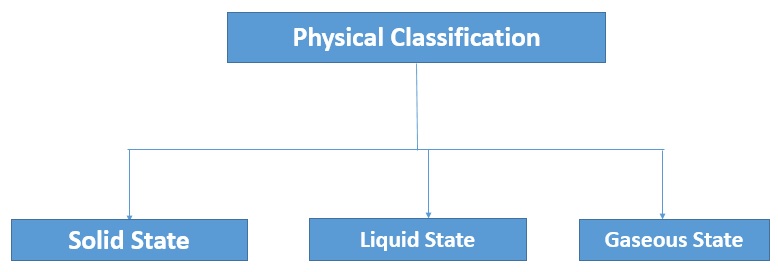
(a). Solid State: A solid possesses a definite shape and definite volume which means that it can not be compressed on applying pressure. Solid are generally hard and rigid. Example: Metals, Wood, Bricks , Copper etc.
(b). Liquid State: A liquid possesses a definite volume but no definite shape. This means that the liquid can take up the shape of container in which it is placed. Example: Water, Milk, Oil, Alcohol etc.
(c). Gaseous State: A gas does not have either a definite volume or definite shape. It can be compressed to large extent on applying pressure and also takes the shape of the container where it is enclosed. Example: Air, Oxygen, Nitrogen, Ammonia, Carbondioxide etc.

Except these three state , there are two more state that is : Plasma State and Bose Einstein Condensation State.
Plasma State : Plasma State consists of super energetic and super excited particles. These particles are in the form of ionised gases. Plasma can occur when matter is heated to a very high temperature. The matter in plasma state is a collection of free highly energetic and highly excited electrically charged particles.
The florescent tubes and neon sign bulbs contain inert gases,when electric current is passed through them, they produce glowing plasma, having a characteristic colour depending upon the nature of the gas. It is the presence of plasma that makes the CFL tube glow.
Bose Einstein Condensation State: In 1920, on the basis of statistical calculation, Satyendra Nath Bose gave the concept of fifth state of matter. Latter American Scientists, succeeded in obtaining this state. The Bose Einstein state is formed by supercooling a gas of extremely low density , about one hundred thousand of the density of normal air, to super low temperature . This process is known as Bose Einstein Condensation ans this state of matter is known as the Bose Einstein Condensation State.
Chemical Classification : On the basis of chemical classification matter is classified in two stages.
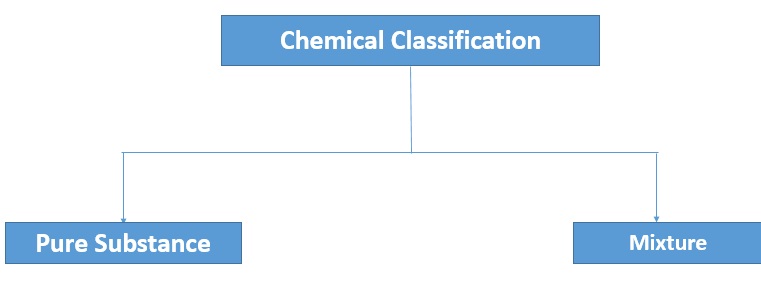
(a). Pure Substance: A matter which can not be separated into other kinds of matter by any physical process is called pure substance.
Pure substance have been classified into Elements and Compounds.
Elements: The simplest form of pure substance which can neither be broken into nor built from simpler substances by ordinary by physical and chemical methods is called element. Example : Gold, Silver, Hydrogen etc.
Elements are further classified into three types.
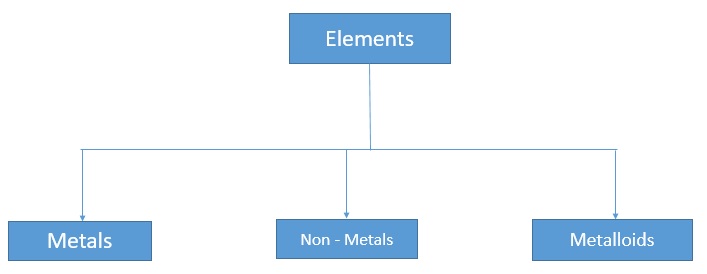
(i). Metals: Metals are solids(Except mercury which is liquid at room temperature) are normally hard. They have lustre, high melting point and boiling point and also good conductor of electricity and heat. The conductivity of metals decreases with increase in temperature due to vibration of positive ions at their Lattice points. Example : Iron, Copper, Silver, Gold, Aluminium, Zinc etc.
(ii). Non- metals : Non-metals are the elements with properties opposite to those of the metals. They are found in all states of matter. They do not possess lustre (Except Iodine). They are poor conductor of electricity(Except Graphite) and they are not malleable and ductile. Examples : Hydrogen, Carbon, Oxygen, Nitrogen, Sulphur, Phosphorous etc.
(iii). Metalloids: Metalloids are the elements which have common properties of both metal and non- metals. Example: Antimony, Arsenic, Bismuth etc.
Compounds : Compounds are pure substances that are composed of two or more different elements in fixed proportion by mass. the properties of a compound are entirely different from those of the elements from which it is made. Example : Water, Sugar, Salt , Chloroform, Alcohol, Ether etc.
Compounds are classified into two types.
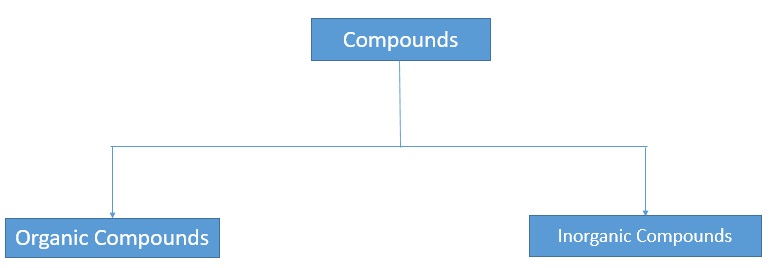
(a). Organic Compounds : The compounds obtained from living sources are called organic compounds. The term organic is now applied to hydrocarbons and their derivatives. For Example : Cabohydrates, Proteins, Oils and Fats etc.
(b). Inorganic Compounds : The Compounds obtained from non- living sources such as rocks and minerals are called inorganic compounds. For Example : Common Salt , Marble, Washing Soda etc.
Mixtures : A material obtained by mixing two or more substances in any definite proportion is called a mixture. The properties of the components in a mixture remain unchanged. For Example : Milk, Sea Water, Petrol, Paint , Glass, Cement ,Wood etc.
There are two types of mixture
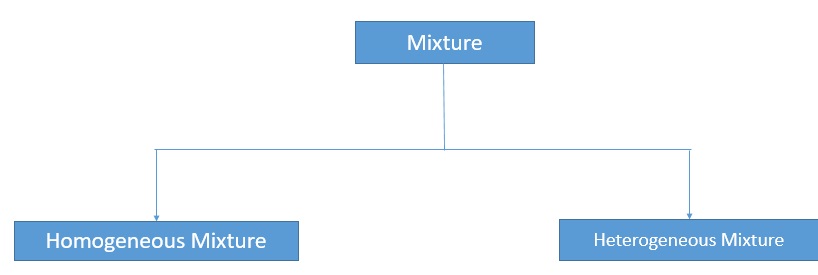
(a). Homogeneous Mixture : A mixture is said to homogeneous if it has a uniform composition through out and there are no visible boundaries of separation between constituents. More over, the constituents can not be seen even by a microscope . For Example Common Salt dissolved in water, sugar dissolved in water, iodine dissolved in CCL4, benzene in toluene and methyl alcohol in water.
(b). Heterogeneous Mixture : A mixture is said to be heterogeneous if it does not have a uniform composition throughout and has visible boundaries of separation between the various constituents. The different constituents of the heterogeneous mixture can be seen even with naked eyes. For Example : A Mixture of Sulphur & Sand, A mixture of Iron filings & Sand etc.
